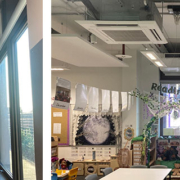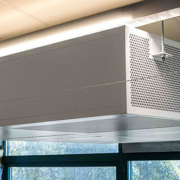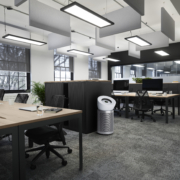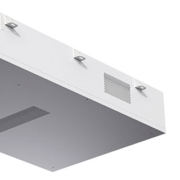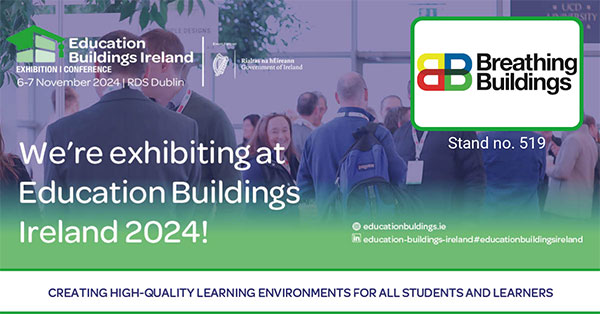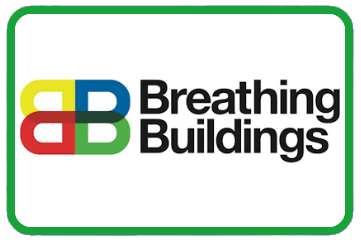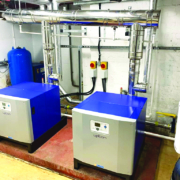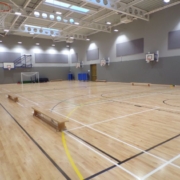Breathing Buildings, a leading provider of controlled natural and hybrid ventilation systems, offers schools a complete ventilation solution to enhance indoor air quality (IAQ), energy efficiency, and sustainability. With high energy costs driving schools to improve energy performance, buildings are becoming increasingly airtight and schools need energy efficient ventilation strategies to maintain healthy and comfortable learning environments.
Historically, funding constraints have hindered infrastructure improvements in schools. However, the recent government commitment of £1.4 billion towards the School Rebuilding Programme, with 100 rebuilding projects starting next year, and an additional £2.1 billion earmarked for school maintenance, providing crucial funding. Schools now have an opportunity to invest in low-carbon, high-efficiency ventilation solutions that provide a healthy environment and long-term cost savings.
Schools require ventilation solutions that not only meet energy efficiency targets but also ensure excellent IAQ to support student well-being, academic performance, and thermal comfort. Despite increased funding, schools are still cost sensitive. Since energy prices are unlikely to decrease significantly, long-term operational costs are critical to the ventilation decision-making process. Fortunately, Breathing Buildings now offers a complete solution for schools’ ventilation requirements, offering natural, hybrid, and mechanical ventilation solutions.
Matthew Cooper, Business Development Director at Breathing Buildings, says:
“Ensuring a healthy learning environment is a top priority for schools since research has shown ventilation increases the chances of better academic results, reduced absenteeism, and improved concentration. With increased financial support now available, schools are investing in improved IAQ and energy efficiency. At Breathing Buildings, we can now provide a complete range of energy efficient ventilation, so we can offer schools the right solution for the application whether it is natural, hybrid, or mechanical ventilation.”
Providing an adaptable solution for schools, Breathing Buildings’ award-winning Natural Ventilation with Heat Recycling (NVHR®) range offers hybrid ventilation, which uses both natural ventilation and mechanical ventilation in one system design. This is an ideal solution for commercial buildings with high heat gains such as schools, colleges, leisure centres, offices, theatres and even churches. Hybrid ventilation is highly efficient and harnesses free heat (and so energy) that has already built up within a space. By installing hybrid ventilation, commercial buildings can maximise health, comfort and sustainability without having to invest in significant building works, making it ideal for retrofitting or change of use.
Going one step further in efficiency, last year Breathing Buildings added to its range of Natural Ventilation with Heat Recycling (NVHR®) systems with its NVHRe, Natural Ventilation with Heat Recycling and Heat Recovery. Marking the next step in hybrid ventilation technology, the key difference between Breathing Buildings’ original NVHR® range and the new innovative Natural Ventilation with Heat Recycling and Heat Recovery (NVHRe), is the addition of a low resistance heat exchanger cell within the unit. This allows the unit to benefit from both heat recycling and heat recovery, reclaiming even more heat than previous models, saving more energy, providing greater occupant comfort, and allowing users to include it within the building energy assessments (SBEM).
The company’s award-winning NVHRe offers the lowest energy consumption for a hybrid heat recovery ventilation unit in the industry, the NVHRe combines 46% heat recovery efficiency with low Specific Fan Power (SFP) of 0.075 W/l/s to help maximise a building’s energy savings. In addition, the NVHRe has several different operating modes to minimise energy use, enhance IAQ and improve occupant comfort. An intelligent hybrid system, the unit automatically decides when and if mechanical operation is required, ensuring it only operates when absolutely necessary.
The range also includes units that can be the primary source of heat; needing no radiators, as well as a system that can offer further cooling. The British designed and manufactured units come in three models with product variations to suit every need with the standard NVHRe 1100 an NVHRe+ 1100 which includes a heating coil and is ideal for buildings in cooler areas; and an NVHRe C+ 1100 which features a heating and cooling coil for year-round comfort and full temperature control.
However, certain environments, such as gyms, canteens, libraries, landlocked rooms or spaces requiring fixed extract rates, need mechanical ventilation solutions to maintain consistent air quality and comfort levels. Air Quality Management Areas, where air pollution levels are higher than the national air quality objectives, also require mechanical ventilation and require higher levels of filtration. Recognising this need, Breathing Buildings recently expanded its portfolio with its MVHRe commercial heat recovery range so it can provide a full range of ventilation options for all settings. A high-efficiency Mechanical Ventilation with Heat Recovery (MVHR) system. With heat recovery efficiency of up to 93%, low energy consumption, and ultra-quiet operation, the MVHRe complements the company’s hybrid ventilation solutions, offering schools a fully integrated, low-carbon ventilation strategy.
Breathing Buildings has adopted the CIBSE TM65 methodology for collecting product data and has completed these evaluations for all its ventilation units, allowing specifiers to accurately evaluate their environmental impact. Meanwhile, Breathing Buildings’ turnkey approach helps everyone; from thermal modelling and system design to site meetings and client demonstrations, tailoring a service to a client’s needs and adding value at every opportunity are important values within the business.
Breathing Buildings’ multi-award-winning natural ventilation with heat recycling (NVHR®) range has won a raft of awards. The company’s NVHRe won the ‘Commercial/ Industrial Ventilation Product of the Year’ category at the prestigious HVR Awards 2024. The NVHRe also scooped the Commercial Ventilation Product of the Year Award at the 2024 Energy Saving Awards. Meanwhile, its NVHR® range won the Energy Efficient Product of the Year Award at the prestigious Energy Awards, and also won three awards for providing ventilation to the East Anglian Air Ambulance project with the Breathing Buildings’ NVHR® range.
Breathing Building offers lunch and learn sessions, as well as a more formal, CIBSE accredited CPD on meeting the requirements of BB101: Guidelines on ventilation, thermal comfort and indoor air quality in schools and TM52: The Limits of Thermal Comfort; Avoiding Overheating.
To book a session with one of our experienced ventilation experts please contact us at
info@breathingbuildings.com or call +44 (0) 1223 450 060
For further information on NVHR®, NVHRe and E-stack ventilation, as well as other products and services offered by Breathing Buildings,
CLICK HERE TO VISIT THE WEBSITE or call us on 01223 450 060.


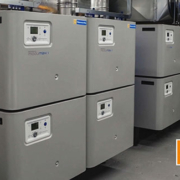
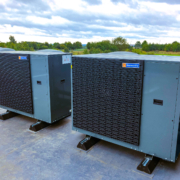
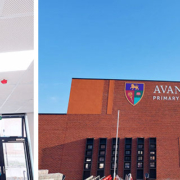
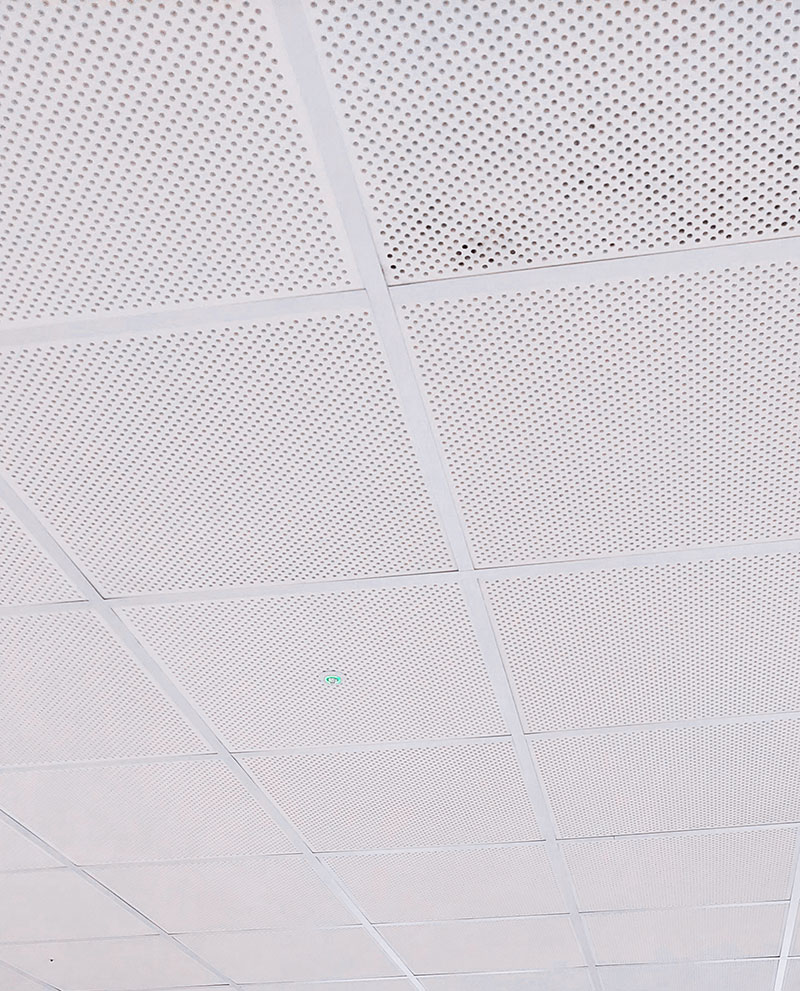 Through this natural process of phase change, we have used the technology in our ThermaCool® wall and ceiling products, giving both thermal mass to lightweight structures and also significantly reducing the energy demand of climate control systems.
Through this natural process of phase change, we have used the technology in our ThermaCool® wall and ceiling products, giving both thermal mass to lightweight structures and also significantly reducing the energy demand of climate control systems.

